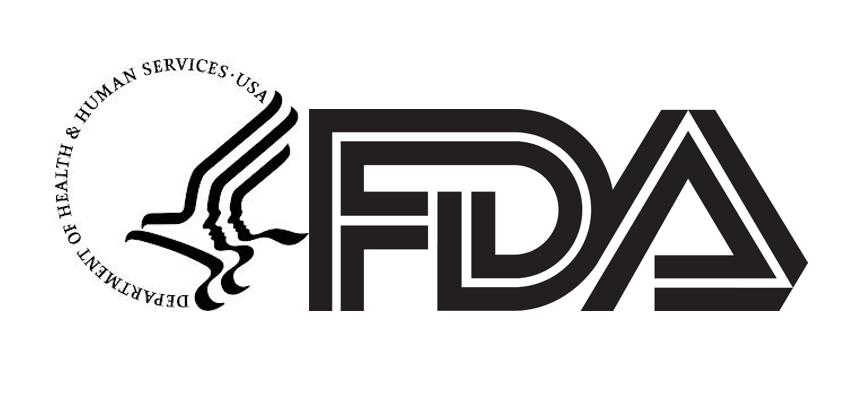Selective Androgen Receptor Modulators, or SARMs, have garnered significant attention in the fitness and medical communities for their potential to provide the benefits of anabolic steroids without the severe side effects. Specifically tailored to bind to androgen receptors in various tissues, SARMs are designed to offer targeted actions, which could lead to muscle growth, fat loss, and increased bone density. Their unique nature has made them a subject of interest for women, who typically seek these benefits but are often more susceptible to the adverse effects of traditional anabolic steroids.
In women, SARMs present a promising alternative for therapeutic applications, including the treatment of muscle-wasting diseases and osteoporosis, without the masculinizing effects often associated with steroid use. Dosage and administration in women are crucial aspects, as female physiology requires careful adjustment to prevent unwanted outcomes. Additionally, the effects of SARMs on athletic performance are of particular interest, as they may offer a competitive edge while staying within the legal boundaries of sports regulations. The landscape of SARMs continues to evolve as research and development aim to fine-tune their efficacy and safety profiles, with a growing body of clinical data informing their use.
Quick Summary
- SARMs offer potential health and performance benefits with reduced side effects compared to anabolic steroids.
- Proper dosage and administration are critical in women to ensure safety and efficacy.
- Continuous research is shaping the regulatory status and public perception of SARMs.
References
- “Selective Androgen Receptor Modulators (SARMs) – A Prohibited Class of Anabolic Agents.” US Anti-Doping Agency. USADA SARMs Reference
- “Selective androgen receptor modulators in preclinical and clinical development.” National Center for Biotechnology Information, U.S. National Library of Medicine. NCBI SARMs Clinical Development Reference
Understanding SARMs

Selective androgen receptor modulators, commonly referred to as SARMs, are a novel class of androgen receptor ligands. They are intended to have the same kind of effects as androgenic drugs, such as anabolic steroids but be much more selective in their action.
What Are SARMs?
SARMs are nonsteroidal oral compounds that bind to androgen receptors in the body. They are designed to mimic the effects of testosterone, which is an androgen, meaning they promote an increase in muscle mass and bone density. Unlike traditional anabolic steroids, SARMs offer a more targeted approach, potentially reducing the likelihood of side effects.
How SARMs Work
SARMs function by selectively binding to androgen receptors in certain tissues, such as muscle and bone, while avoiding other tissues. By doing so, they aim to stimulate anabolic activity without causing a significant impact on other parts of the body, which can lead to negative side effects.
SARMs vs. Anabolic Steroids
- Non-selective
- Bind to androgen receptors throughout the body
- Can lead to a wide range of side effects
SARMs:
- Selective
- Primarily target muscle and bone tissue
- Aim to minimize side effects due to selectivity
References
SARMs for Women

Selective Androgen Receptor Modulators (SARMs) have garnered interest for their potential in impacting women’s body composition and muscle growth. With a distinct safety and efficacy profile compared to traditional anabolic agents, an understanding of their use in women is crucial.
Safety Profile
SARMs are reputed to have a more favorable safety profile than anabolic steroids, with fewer androgenic effects. This quality makes them an appealing option for women. Liver injury and drug-induced liver injury are possible adverse events that require consideration. Women considering SARMs should be informed of potential side effects, such as virilization, although such outcomes may be less common than with anabolic steroids. It is imperative that their use is monitored, and preferably conducted in a research setting to ensure drug safety and determine the full extent of any adverse events.
- Possible Side Effects:
- Virilization symptoms
- Hair loss
- Acne
- Altered menstrual cycle
- Adverse Events:
- Hepatotoxicity
- Elevated liver enzymes
Body Composition and Muscle Growth
SARMs have been researched for their ability to increase muscle mass and lean body mass in women without the severe masculinizing effects associated with other muscle-building drugs. The potential benefits of using SARMs include improved physical function and muscle strength, which can be particularly beneficial for women in catabolic states, such as those experiencing muscle wasting diseases. However, data on the optimal dosage for women is limited, and more research is needed to establish the ideal balance between efficacy and safety.
- Benefits for Women:
- Increased muscle mass
- Enhanced muscle strength
- Potential improvement in overall physical function
References
A detailed study on the effects of SARMs on muscle growth in women: https://www.ncbi.nlm.nih.gov/pmc/articles/PMC4111291/
An observational study on the safety and side effects of SARMs: https://www.ncbi.nlm.nih.gov/pmc/articles/PMC3177038/
Therapeutic Applications
Selective Androgen Receptor Modulators (SARMs) offer potential benefits in various therapeutic contexts, specifically targeting the androgen receptor to improve musculoskeletal health and physical function while minimizing adverse effects.
SARMs in Oncology
In oncology, SARMs are under investigation for their role in managing cachexia and muscle wasting in cancer patients. By selectively binding to androgen receptors, they promote anabolic activity, which may counteract muscle degradation and improve the overall quality of life for those with cancer-related cachexia.
Bone Health and Osteoporosis
SARMs contribute to bone health by stimulating bone formation and decreasing bone turnover. Clinical studies suggest potential applications in osteoporosis treatment, addressing bone density loss and aiding in the prevention of fractures related to diminished bone health.
Muscle Wasting Conditions
Muscle wasting conditions such as sarcopenia and muscular dystrophy are characterized by progressive muscle loss. SARMs show promise in preserving muscle mass and improving physical function, which is significant for maintaining independence in affected populations.
Anabolic Deficiency Syndromes
For individuals with anabolic deficiency syndromes, such as male hypogonadism, SARMs offer a therapeutic avenue for restoring muscle mass and strength with fewer side-effects compared to traditional androgen therapy, emphasizing safety in clinical use.
References
Popular SARMs and Their Uses

Selective Androgen Receptor Modulators (SARMs) are compounds that selectively target androgen receptors to provide specific therapeutic benefits. Among these, certain SARMs have gained popularity for their use in enhancing lean body mass and physical performance.
Enobosarm (Ostarine) Overview
Enobosarm, also known as Ostarine, is one of the most studied SARMs. Clinical trials suggest that it helps in increasing lean body mass and improving physical performance with minimal side effects. It is believed to selectively target muscle and bone tissue to enhance growth and strength without significantly affecting the production of natural testosterone levels.
Andarine and Ligandrol
Andarine, a SARM developed for treating conditions like muscle wasting, is recognized for its ability to promote muscle growth without significant androgenic activity. Its efficacy stems from its moderate anabolic activity.
Ligandrol, also known as LGD-4033, has shown to be a potent SARM for muscle building. Rigorous studies reveal that it can substantially increase lean body mass while being well-tolerated. Ligandrol’s anabolic effects are stronger than testosterone, with a focus on muscle and bone tissue.
Side Effects and Health Concerns

Selective Androgen Receptor Modulators (SARMs) have been associated with a range of potential side effects and health concerns specifically in women, who may experience different adverse reactions compared to men due to differences in physiology and hormone levels.
Potential Risks and Adverse Reactions
Individuals using SARMs might experience drug-related side effects and adverse reactions. These can vary in severity and may include symptoms such as fatigue, headache, and changes in mood, which could potentially impact daily functioning. More serious concerns involve the risk of liver injury, which has been documented in various case reports. Hepatotoxicity can range from mild enzyme elevations to severe liver damage.
- Cardiovascular Risks: Studies have indicated a possible link between SARMs use and an increased risk of heart attack and stroke. This connection necessitates monitoring for cardiovascular symptoms when using these substances.
- Musculoskeletal Effects: While SARMs are often sought for muscle growth, their impact on musculoskeletal health, including the possibility of tendon injuries, should not be overlooked.
Endocrine and Reproductive Issues
SARMs have profound effects on the endocrine system, potentially disrupting the hormonal balance critical for female health. Reproductive evaluation has shown that these substances can lead to menstrual irregularities and may contribute to infertility.
- Impact of Fertility: There’s evidence suggesting that SARMs can adversely affect fertility by altering reproductive hormones, leading to issues such as amenorrhea or oligomenorrhea, potentially contributing to infertility.
- Testicular Size and Function: While more relevant to male physiology, the effect on testicular size and function indicates a broader concern regarding reproductive health that could extrapolate to ovarian function and health in women.
The ongoing research into the safety and drug safety profile of SARMs continues, and it is imperative to consult healthcare professionals before considering their use.
Regulatory Status

Selective Androgen Receptor Modulators (SARMs) occupy a complex regulatory space due to their status as investigational drugs that have not gained FDA approval for clinical use.
FDA Guidelines and Legal Context
The FDA has not approved SARMs for use by individuals, and they are currently classified as investigational drugs. Their use is limited to clinical trials that are a part of the drug discovery process. SARM use outside of FDA-approved research constitutes off-label usage in the United States. The administration has taken measures to warn consumers and professionals about the potential dangers of SARMs, emphasizing the lack of safety data.
It is important to note that while SARMs can be found in various products marketed as dietary supplements, the FDA has explicitly stated that these compounds do not meet the definition of a dietary supplement. Furthermore, the FDA has issued warning letters to companies that have engaged in the sale of SARMs due to the associated health risks and the products being misbranded as supplements. The regulatory body maintains the stance that SARMs pose significant risks to patient health and have the potential for abuse.
Dosage and Administration in Women

When considering the use of Selective Androgen Receptor Modulators (SARMs) in women, careful attention must be paid to dosage and administration to minimize side effects and maximize the benefits concerning lean body mass and overall health.
Effective Dosing Strategies
The dosing of SARMs in women is typically lower than in men, due to differences in pharmacokinetics and pharmacodynamics. It’s crucial to begin with a conservative dose and adjust as needed while monitoring the effects. For example, a common starting dose for Ostarine (MK-2866), one of the most well-known SARMs, might be as low as 5 mg daily. Research suggests this dosage can yield a favorable increase in lean body mass with a reduced risk of virilization (1).
Recommended starting doses for common SARMs in women:
- Ostarine (MK-2866): 5 mg/day
- Ligandrol (LGD-4033): 1 mg/day
- Andarine (S4): 12.5-25 mg/day
The dosing strategy should include periodic reevaluation to determine the effectiveness and any potential adverse effects. If side effects occur, cessation or modification of the dosage is recommended.
Considerations for Female Users
For female users, safety is paramount to prevent undesirable side effects, such as those associated with masculinization. The female body responds differently to SARMs, and sensitivity to these compounds can be more pronounced. Observation of female-specific effects during a cycle is integral for avoiding long-term adverse events.
Monitor the following aspects to ensure safe administration:
- Menstrual regularity: Alterations in cycle patterns may indicate hormonal imbalances.
- Virilization symptoms: Such as voice deepening or increased body hair, should prompt immediate reassessment of dosage.
- Overall well-being: Including mental health and libido changes.
Adjusting dosages based on individual response and these considerations is necessary to achieve the best balance between benefits and safety.
Effects on Athletic Performance

Selective Androgen Receptor Modulators (SARMs) have garnered attention for their potential impact on athletic performance, particularly among women. Focusing on physical enhancement capabilities, appearance, and acceptance within the athletic community, their effects merit close examination.
Physical Enhancement Capabilities
SARMs have been associated with increased muscle strength and lean muscle mass, attributes highly sought after by athletes aiming to improve performance. Unlike traditional steroids, SARMs selectively target androgen receptors within muscle and bone tissues, which can lead to enhanced anabolic cellular activity without significant androgenic side effects.
- Muscle Strength: Studies suggest that SARMs can increase muscle strength to some degree, which can translate to improved athletic performance in various sports.
- Lean Muscle Mass: Incremental gains in lean muscle mass from SARM use can help athletes in sports where power-to-weight ratio is critical, such as in track and field.
Impact on Physical Appearance
Beyond performance, SARMs can affect physical appearance, particularly through the development of lean muscle. For athletes in bodybuilding or any sport where muscle definition and composition are judged, maintaining a low body fat percentage while increasing muscle mass can be beneficial, and SARMs are often used with this goal in mind.
- Physical Appearance Enhancements: The use of SARMs has been shown to lead to a more defined muscle structure, lending to potentially favored physical aesthetics in the field of competitive sports.
SARMs in the Athletic Community
Despite their potential, SARMs are not legal for use in most organized sports. They are considered performance-enhancing drugs and fall under the same regulatory bans as steroids when it comes to athletic competition. Athletes who test positive for SARMs risk sanctions and reputation damage. Nevertheless, they remain a topic of interest in the athletic community, particularly where drug safety and the ethics of recreational use are discussed.
- Regulatory Status: Various sports governing bodies, including the World Anti-Doping Agency (WADA), have SARMs on their list of prohibited substances.
- Ethical Considerations: The use of SARMs raises ethical issues within the community, regarding the fairness and integrity of competition.
SARMs in Research and Development
Selective Androgen Receptor Modulators (SARMs) are a class of therapeutic compounds that possess properties similar to anabolic agents but with reduced androgenic properties. This section examines their ongoing clinical trials and potential future developments.
Ongoing Clinical Trials
TT-701 is undergoing clinical evaluation for its potential to treat conditions associated with muscle wasting and osteoporosis, highlighting its role in SARMs research. Multiple phase II trials aim to determine its efficacy and safety profile in humans. Another compound, Ibutamoren (MK-677), is being studied for its growth hormone-secreting properties, which could be beneficial in treating growth hormone deficiencies.
Emerging SARMs and Future Prospects
Future prospects for SARMs are promising with continuous drug discovery and development efforts. Endurobol (also known as GW501516) and Stenabolic (SR9009) are being explored for their unique impacts on endurance and metabolism respectively. YK-11 is another novel compound characterized by its dual action as both a SARM and a myostatin inhibitor, potentially paving the way for new therapeutic applications.
References
Public Perception and Social Influence

The influence of social media has significantly shaped public perception of Selective Androgen Receptor Modulators (SARMs), particularly among women. Discussions on platforms such as Reddit reflect varying views on usage and effects, alongside demographic-driven perspectives that are captured by internet surveys.
SARMs Discussion on Social Media
Social media platforms have become pivotal in disseminating information about SARMs. On Reddit, threads dedicated to SARMs reveal a tapestry of personal stories, from success narratives to cautionary tales. Posts often include detailed accounts of dosages and the perceived effects, contributing to a user-generated body of knowledge. Influencers on social media have the potential to sway opinions, sometimes glamorizing SARMs without acknowledging the risks of misuse.
- Misinformation: Despite genuine experiences, misinformation is rife, with anecdotes often taken at face value.
- Community Support: Conversely, many users find community support, engaging in harm reduction and sharing safe usage tips.
Demographic Trends and User Surveys
Demographic trends indicate that interest in SARMs extends across both genders, but targeted conversations in female-centric forums illustrate unique concerns and motivations connected to body image and performance enhancement.
- Female Users: An increasing number of internet surveys from fitness and bodybuilding websites highlight that women are using SARMs not only for athletic gain but for aesthetic reasons too.
- Safety and Side Effects: These surveys often emphasize a need for more gender-specific research on SARMs to understand the long-term effects on women’s health.
Frequently Asked Questions

What are the potential side effects of SARMs for women?
Women may experience side effects from SARMs such as virilization, hormonal imbalances, and potential liver toxicity. It is crucial for female users to monitor for masculinization signs such as deepened voice and increased body hair.
Can SARMs usage lead to long-term health consequences in women?
There is potential for long-term health issues stemming from SARMs use in women, including but not limited to, disruptions in the menstrual cycle, negatively affected fertility, and cardiovascular complications.
How does the impact of SARMs differ between men and women?
The impact of SARMs can differ due to variations in male and female endocrinology. Women are more sensitive to SARMs and may experience effects at lower doses due to their typically lower androgen levels compared to men.
What are the legal considerations for purchasing SARMs?
As of the knowledge cutoff date, SARMs are legally sold as research chemicals but are not approved by the FDA for human consumption. It is illegal to market them as dietary supplements, and buyers should verify their legal status in their respective jurisdictions.
What are the primary benefits of SARMs for female users?
Female users often take SARMs for muscle growth, fat reduction, and bone density improvement. SARMs provide a targeted approach compared to steroids, hence why some women opt for them for fitness and bodybuilding goals.
How do SARMs compare to traditional steroids in terms of safety and effectiveness for women?
SARMs are typically viewed as a safer alternative than traditional steroids because they selectively target androgen receptors, which can lead to fewer side effects. However, the relative safety and effectiveness for women depend on the specific compound used and individual response.
References
- Selective Androgen Receptor Modulators: Current Knowledge and Clinical Applications
- The Safety, Pharmacokinetics, and Effects of LGD-4033, a Novel Nonsteroidal Oral, Selective Androgen Receptor Modulator, in Healthy Young Men
- The Emerging Role of Selective Androgen Receptor Modulators in Prostate Cancer (An overview of SARMs)
Dr. Grant Fourie, a specialist in male hormones, is based in Cape Town, South Africa. He provides comprehensive treatments for conditions related to low testosterone, such as erectile dysfunction, fatigue, and mood changes. His methods include hormone replacement therapy and other modern treatment options.
Contact me via email or phone to book personal appointment in my clinic: The Village Square, Cape Town - South Africa



